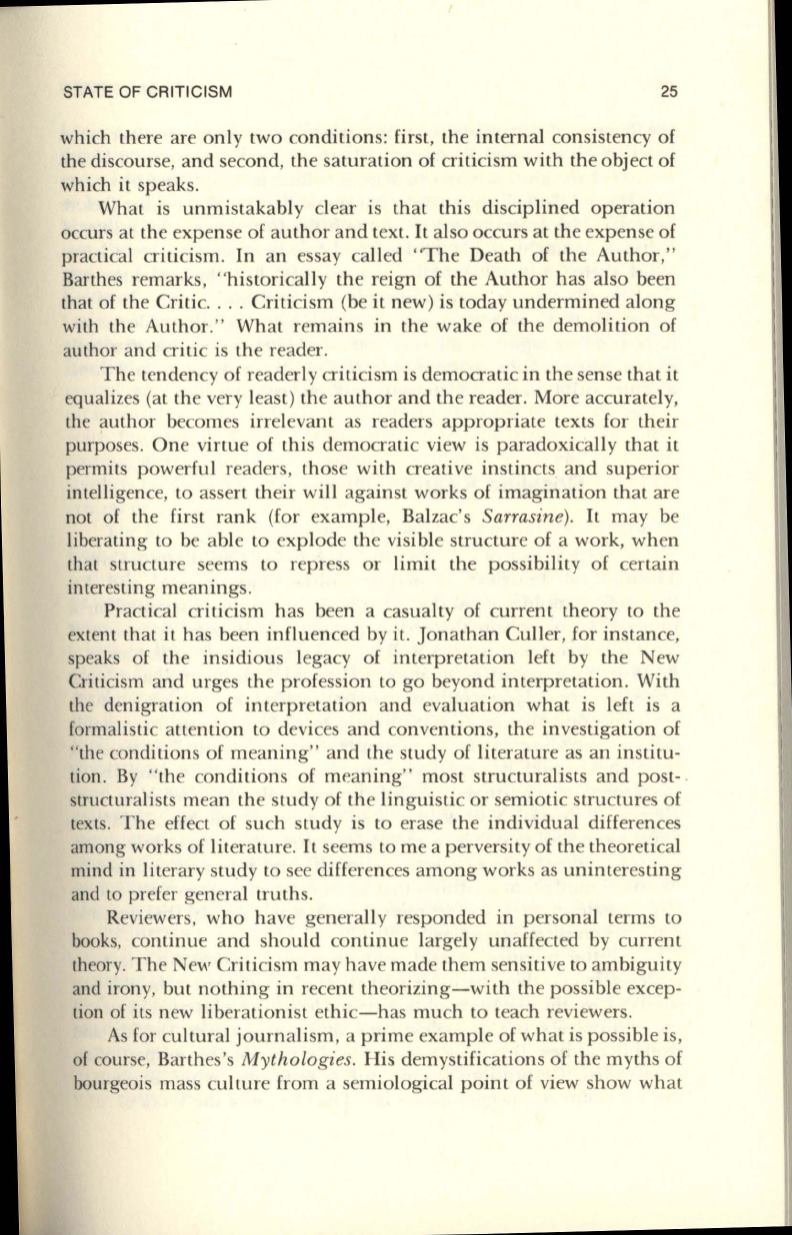
STATE OF CRITICISM
25
which there are only two conditions: first, the internal consistency of
the discourse, and second, the saturation of criticism with the object of
which it speaks.
What is unmistakably clear is that this disciplined operation
occurs at the expense of author and text.
It
also occurs at the expense of
practical criticism. In an essay called "The Death of the Author,"
Barthes remarks, "historically the reign of the Author has also been
that of the Critic. ... Criticism (be it new) is today undermined along
with the Author." What remains in the wake of the demolition of
author and critic is the reader.
The tendency of readerly criticism is democratic in the sense that it
equalizes (at the very least) the author and the reader. More accurately,
the author becomes irrelevant as readers appropriate texts for their
purposes. One virtue of this democratic view is paradoxically that it
permits powerful readers, those with creative instincts and superior
intelligence, to assert their will against works of imagination that are
not of the first rank (for example, Balzac' s
Sarrasine).
It
may be
liberating
to
be able to explode the visible structure of a work, when
that structure seems to repress or limit the possibility of certain
interesting meanings.
Practical criticism has been a casualty of current theory to the
extent that it has been influenced by it. Jonathan Culler, for instance,
speaks of the insidious legacy of interpretation left by the New
Criticism and urges the profession to go beyond interpretation. With
the denigration of interpretation and evaluation what is left is a
formalisti c attention to devices and conventions, the investigation of
"the conditions of meaning" and the study of literature as an institu–
tion. By "the conditions of meaning" most structuralists and post- .
structuralists mean the study of the linguistic or semiotic structures of
texts. The effect of such study is to erase the individual differences
among works of literature.
It
seems to me a perversity of the theoretical
mind in literary study to see differences among works as uninteresting
and
to
prefer general truths.
Reviewers, who have generally responded in personal terms to
books, continue and should continue largely unaffected by current
theory. The New Criticism may have made them sensitive to ambiguity
and irony, but nothing in recent theorizing-with the possible excep–
tion of its new liberationist ethic-has much to teach reviewers.
As for cultural journalism, a prime example of what is possible is,
of course, Barthes's
Mythologies.
His demystifications of the myths of
bourgeois mass culture from a semiological point of view show what


